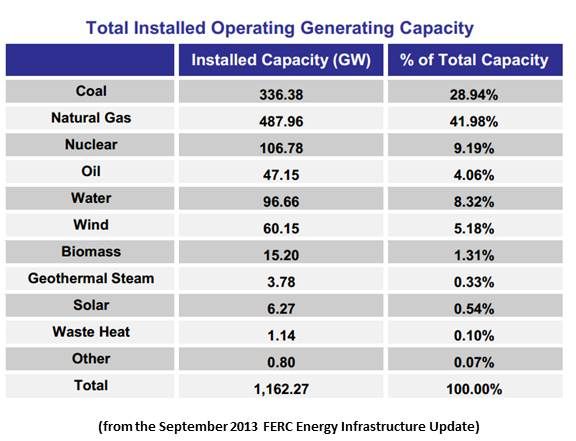The abundance of natural gas in Texas and across the U.S. has renewables developers thinking about where they fit into the energy mix.
“Based on statements from President Obama and his administration, 'all of the above' is the de facto U.S. national energy policy -- but that means many different things to different people,” Texas Renewable Energy Industries Association co-founder and Executive Director Russel Smith said at TREIA’s Renewable Energy in an All-of-the-Above World conference.
“To some, it’s accusatory, and means, ‘You guys in renewable energy get all the attention.’ It can be the oil and gas industry saying, ‘Pay attention to us,’” Smith said to the audience of renewables and natural gas developers and advocates. “For others, it’s congratulatory, and means ‘Renewable energy is now a player.’ The question is what effect an all-of-the-above national energy policy will have on renewables.”
“I thought 'all of the above' meant 'all the energy above the ground surface!'” interrupted Austin Energy executive and TREIA co-founder Michael Osborne.
OCI Solar CEO Antony Dorazio picked up on the joke. “'All of the above' means ‘I want votes from all of the above.'” OCI Solar, a vertically integrated solar manufacturing and EPC services provider, has announced plans to employ 800 people to carry out contracts with San Antonio municipal utility CPS Energy for the installation of 400 megawatts of PV capacity by 2016.
“The status quo is not always bad,” Dorazio went on. “Renewables have grown tremendously in the last decade. But to keep the status quo, all the programs and incentives have to stay in place.”
“Yes, it means, ‘I don’t want to tick anybody off; I want all their votes,’ agreed Andrew McCalla, President and founder of Meridian Solar, Inc., a PV components, design, and installation company that has built some 450 projects since 1999 and recently decommissioned its residential unit to focus entirely on commercial and industrial projects.
“In addition to the de facto energy policy,” McCalla said, “we have a de facto ‘Everything that’s playing keeps playing' policy. But not on a level playing field." Renewables cannot get that level playing field, he explained, because of vested interests.
“At scale -- and we are a long way from getting there -- renewables are a threat to utilities. A threat to a 100-year-old business model that burns stuff, runs it through wires, and sells it,” McCalla said. “Utilities once called renewables ‘dangerous’ to the grid. Now they are creating obstacles to interconnection and net metering. And they are starting to talk about stranded assets, which is the latest red herring. I don’t know what they’ve got after this one. Clearly, renewable technologies work and are helpful, not just to the transmission system but to society in general.”
“There are stranded assets,” Dorazio, a former utility executive, answered. “The utilities make investments for 25 years and they get their return back from ratepayers, but if the growth of distributed generation cuts that return short, they do have stranded assets. Their next excuse will be the smart grid. The smart grid is going to cost money. Who is going to pay for it? Will it be the power producers? The ratepayers? It is going to be a whole different system, and somebody will have to pay for it."

“For us, the realistic meaning of 'all of the above' means there is a place for all the generation sources,” said Patrick Woodson of E.ON, a global utility based in Europe that owns all types of resources and has built eighteen wind projects in Texas and 1,800 megawatts of U.S. wind capacity.
“We all know we have to have baseload generation. We all know that renewables are already playing an important part in the mix,” Woodson said. “But the lack of clarity on what that mix ought to be is the real problem. We need to have a real discussion of what mix we should push for. It might be a different mix in different regions. There is room in this country for a host of generation sources. Wind, solar, and natural gas are really complementary technologies that can push each other. But there are places where coal and nuclear make sense. That may not be a popular thing to say. We need to look at this on a holistic basis, and we are just not doing that right now. For us, there is a great discussion still to be had. There can be a plan that really can include 'all of the above' if we do it right.”
“It is going to take a blended solution to meet our power needs,” said Joel Hart, president of Hydro-Star Energy. Hydro-Star is an independent, community-scale wind developer. Earlier at the conference, Hart had described a man who was watching a wind turbine being built in Pampa, Texas and remarked that it was “'the first time anybody ever drilled up in this town.'”
“If renewable energy is here to stay, we have to take the good with the bad and be able and willing to compete,” Hart said. “We just want equitable and fair access and, even with 'all of the above,' I think we’ll do fine.”




